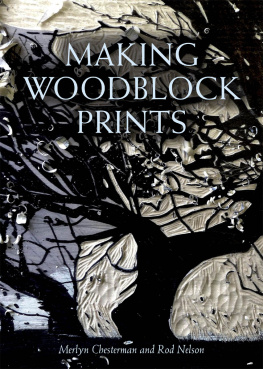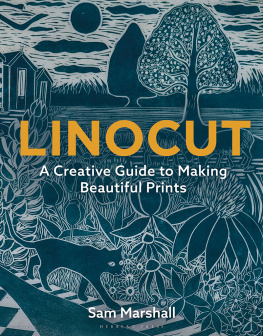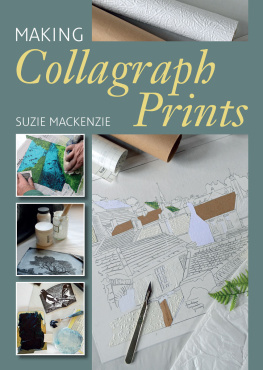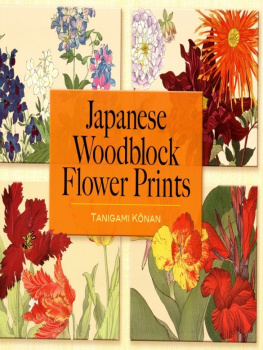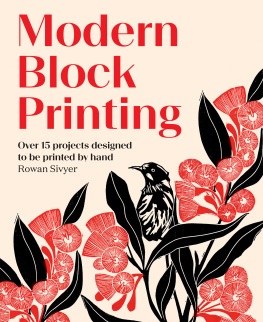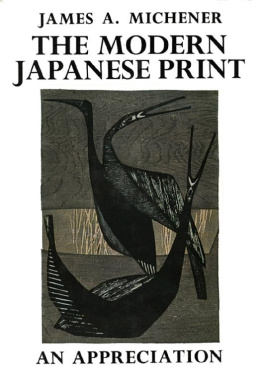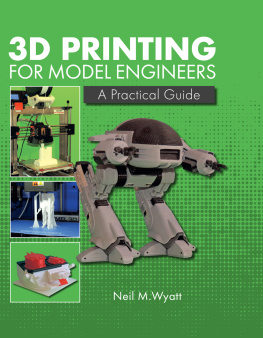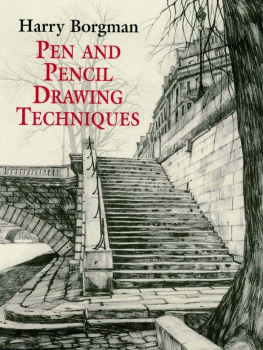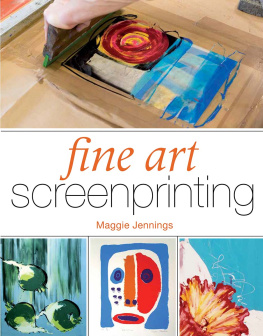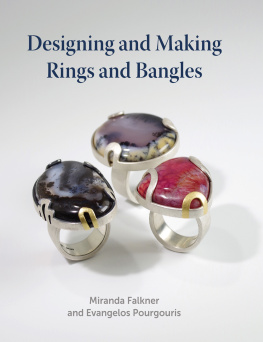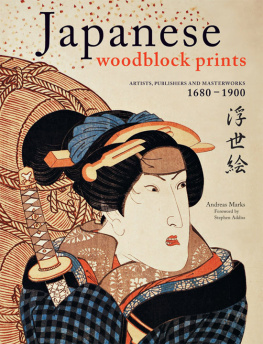
MAKING
WOODBLOCK
PRINTS
Merlyn Chesterman and Rod Nelson

THE CROWOOD PRESS
First published in 2015 by
The Crowood Press Ltd
Ramsbury, Marlborough
Wiltshire SN8 2HR
www.crowood.com
This e-book first published in 2015
Merlyn Chesterman and Rod Nelson 2015
All rights reserved. No part of this publication may be reproduced or transmitted in any form or by any means, electronic or mechanical, including photocopy, recording, or any information storage and retrieval system, without permission in writing from the publishers.
British Library Cataloguing-in-Publication Data
A catalogue record for this book is available from the British Library.
ISBN 978 1 84797 904 9
Frontispiece: Birds by Rod Nelson.
CONTENTS
ACKNOWLEDGEMENTS
We would like to acknowledge the help, teaching and friendship of Chinese printmakers in both Guanlan and Shanghai. They have enriched this book with their skill and tradition. Zhao Jiachun, Guang Jun and Sunset Li Dongxia, Lily Luo Liqun and the Sweet-scented Osmanthus Primary School and pupils, Chen Yuping, Wu Enqi and Shandan, Chen Xiangning, all at Guanlan Print Base, and Mr Lu Zhiping in Shanghai. Our thanks also to Carl-Heinz Kliemann and to Eva Pietzcker for kindly allowing us to use their print images. We would also like to thank Liz Beecheno for allowing us to use Bathers, a wood engraving by her father, John Buckland-Wright, Philip Leach for the kind words, Dieter Wanczura for his great expertise, Leon Loveridge for mathematical and editorial input, Pat Millner for careful reading and comment, and our co-members of the collective Pine Feroda, Ian Phillips, Judith Westcott and Julia Manning. Additional thanks for his expertise in reduction printmaking to Ian Phillips; to Frannie Leach and Bob Seymour for their two photographs; and to Judith Westcott for being a star.
DEDICATION
For all who like woodblock prints
FOREWORD

Woodcut by Li Dongxia.
Merlyn and Rod together have produced this extraordinary book on the art and craft of woodblock printing. It is a thorough masterpiece, combining a lucid text and superb illustrations to show all aspects of the process of making a print from the cutting, the tools and the paper, through to the inks, the types of press and finally the printing. The book is a first, and whether you are a beginner or well-established in the art of woodblock printing, it contains a very wide span of information and useful facts.
Merlyn Chesterman and Rod Nelson are both well-known in the field of printmaking and have pooled their resources to produce this book. I thoroughly recommend it and feel inspired to go and sharpen my V-shaped tools right away.
I can see this book as having the same feel as a well-thumbed cookery book.
Philip Leach, Springfield Pottery,
Hartland, Devon
CHAPTER ONE
AN INTRODUCTION TO THE WOODBLOCK PRINT
The ability to print an image is as old as the human race itself. A finger, dabbed in some mud, imprints upon a face. A handprint is pressed on to the wall of a cave, and then another one and another, until a pattern is made.
Tens of thousands years later, the same process developed through what we now regard as simple technologies into a process that would change the world immeasurably. There are woodblock prints on silk from China pre-dating 220 CE . By the mid-seventh century in China, sophisticated prints, both image and text, were made on paper from planks of wood.
To make a woodcut or woodblock print (the two are synonymous), four things are required: sharp tools, smooth wooden surfaces, paper (or cloth) and ink. Sharp metal tools are needed to shape the planks, smooth them, and incise marks into the smooth surface. Ink must then be applied to the plank, on to which the paper is then pressed.
This is a process that can be carried out repeatedly, resulting in printed sheets of information or decoration that is permanently available, transportable and relatively inexpensive.
Printing was a revolutionary discovery. The woodblock print or woodcut was born as a medium. Suddenly, using this newly discovered method, practical knowledge, data, wisdom and art could be made available to a vastly greater number of people than had previously had access to it. By doing so, it facilitated profound intellectual and technical development in China and in the Far East, generally at a time when the transfer of knowledge in the West could only be done by handwritten books and verbal traditions.

The Moon Boat by Qianyi Huang from the Sweet-Scented Osmanthus Primary School of Longhua, Shenzhen City, teacher Ri Rao Zhang.
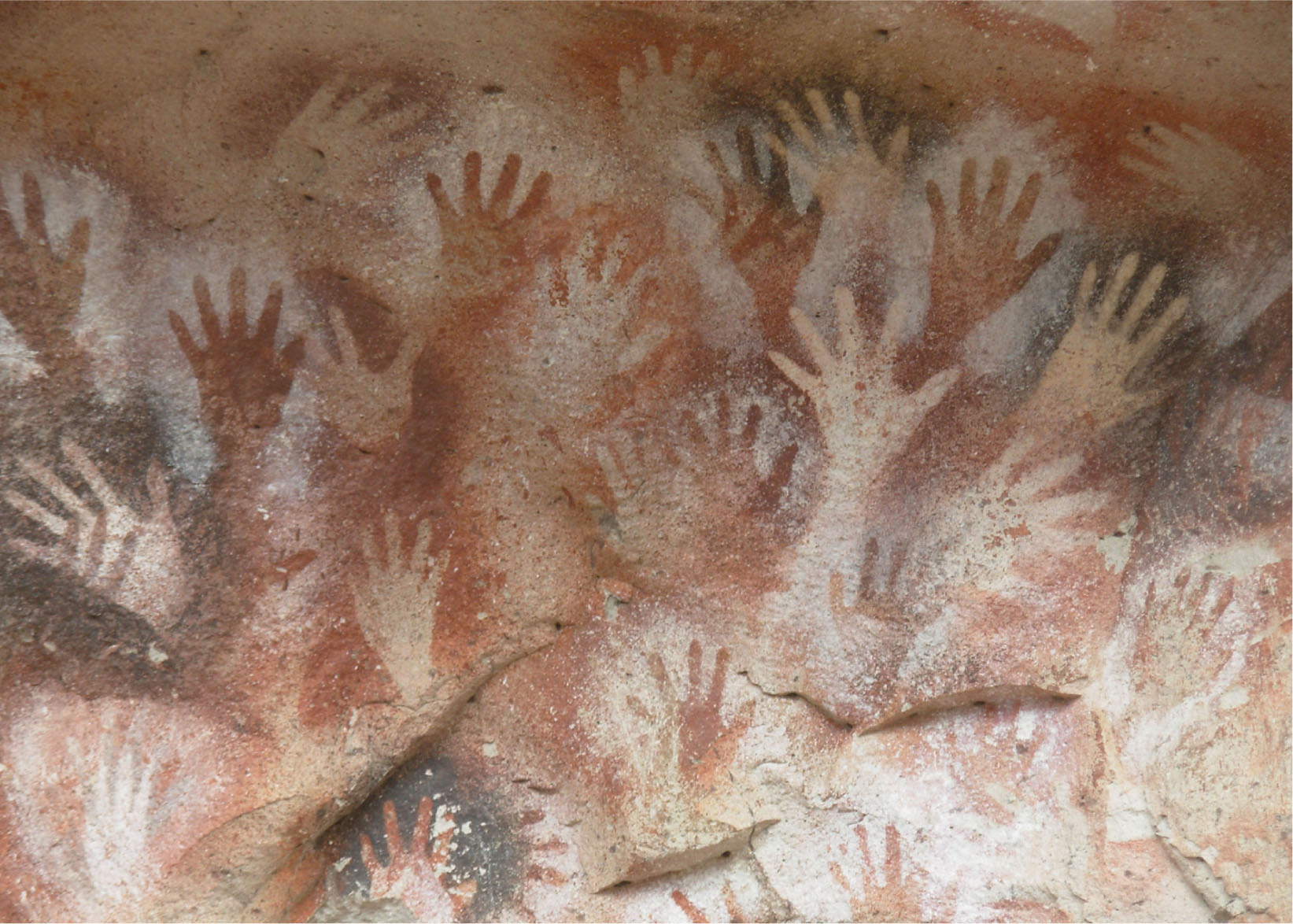
Cueva de las Manos, Patagonia, prehistoric handprints.
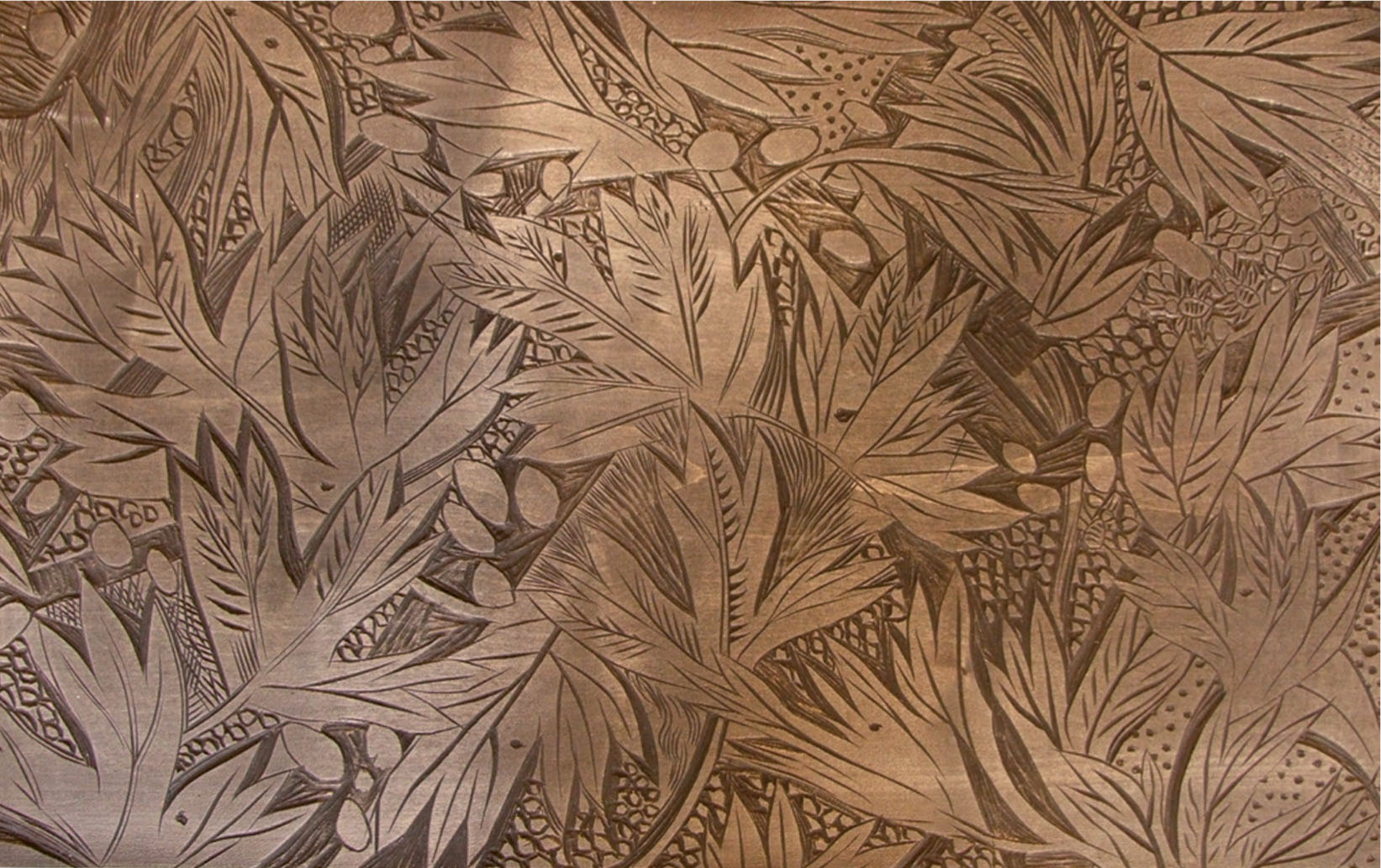
Cut marks incised into a smooth surface Leaf Surface (block) by Rod Nelson.
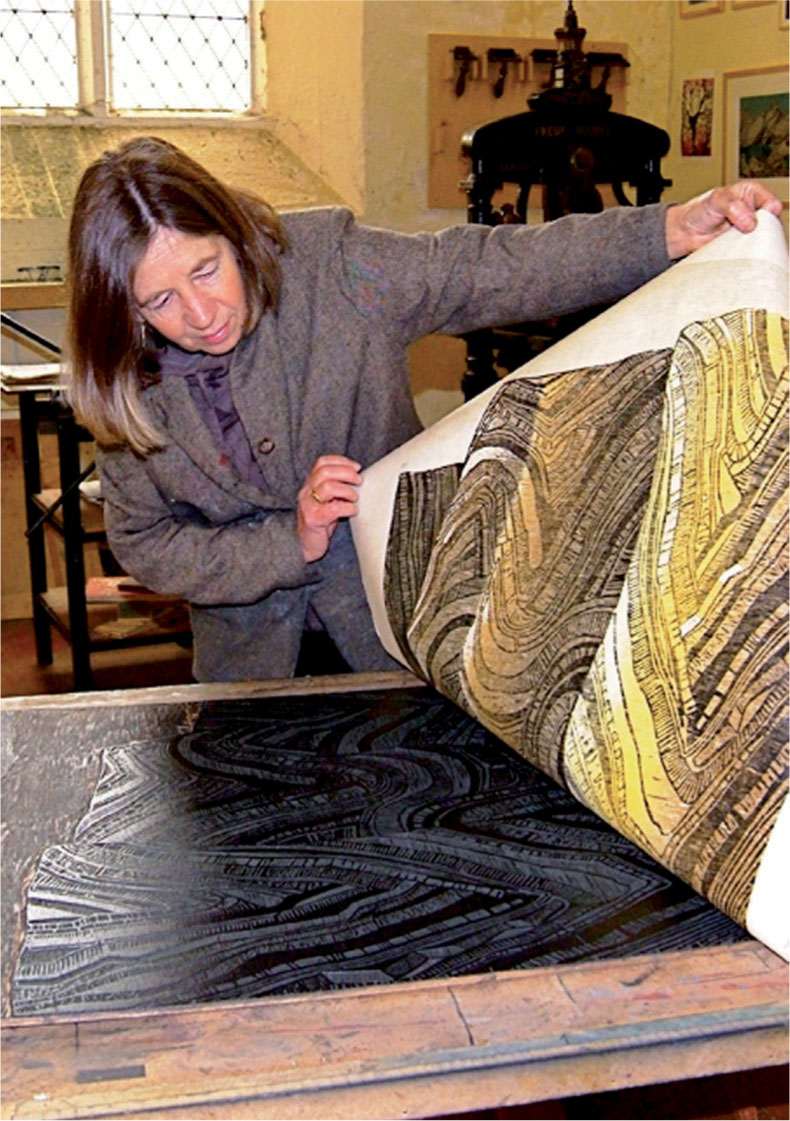
The author lifting a print.
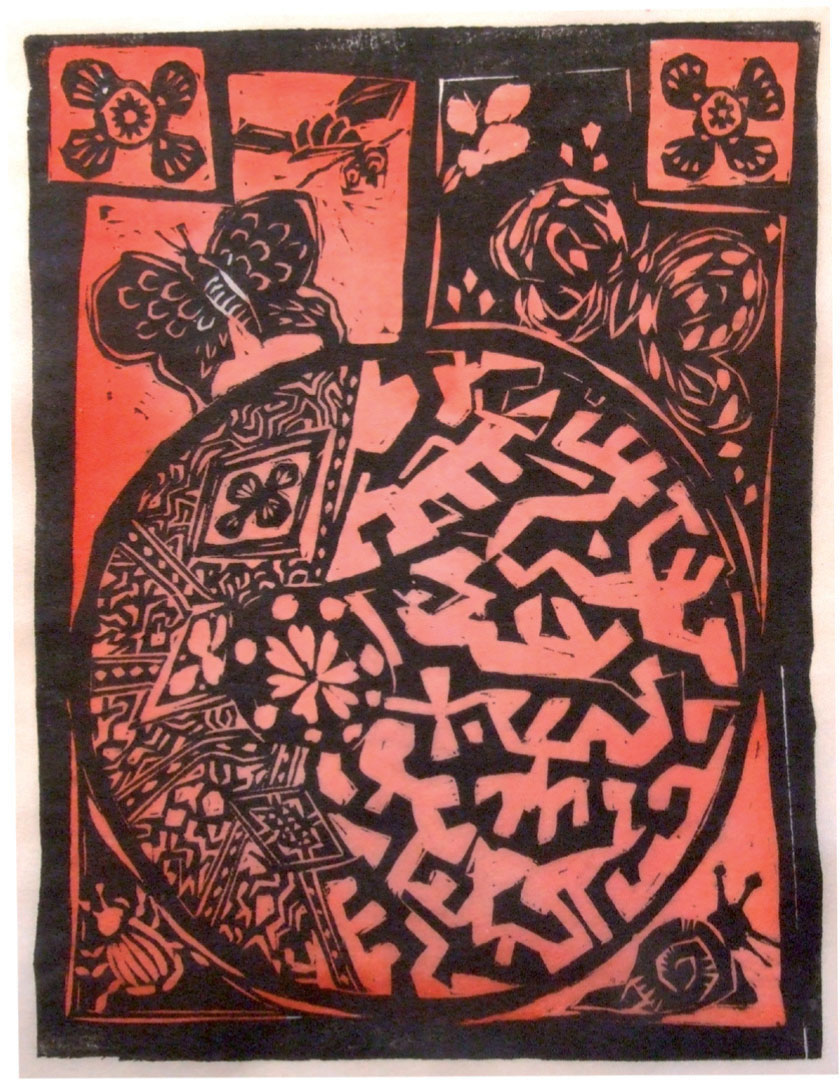
Pattern of Small Beings (in Ssaku Hanga style) by Rod Nelson.
Although printing has developed immeasurably since that time, and the technology has evolved through several powerful transformations on a thousand-year evolutionary journey from Gutenburgs important invention of moveable type to the amazing possibilities of the modern digital print, the art and craft of making prints from wood still has unique creative potential. To put it simply, one can make images using this most ancient technique of printing, which cannot be made in any other way, even using the most modern technology. Because of this, woodblock printing still has relevance and a life of its own as an art form it will not die out or become obsolete despite the development of more sophisticated technologies.
Woodblock printmaking reached its technical apotheosis in nineteenth-century Japan, where specialist artists and craftsmen produced phenomenally beautiful and delicate images. As many as seventeen blocks, each one printing a separate colour, were used in the production of a single print.
Blocks were cut by teams of specialist craftsmen. However, early in the twentieth century there was a reaction against this specialization by some Japanese artists who wished to take full control of the printing process themselves. They formed the Ssaku-hanga (literally creative prints) movement of artist-craftsmen. They were influenced by Western artists, particularly by Van Gogh, the Impressionists and the Vienna school. The artists of the Ssaku-hanga have influenced our own approach to printmaking, and in this book, their presence is to be found as one of a number of influences.

